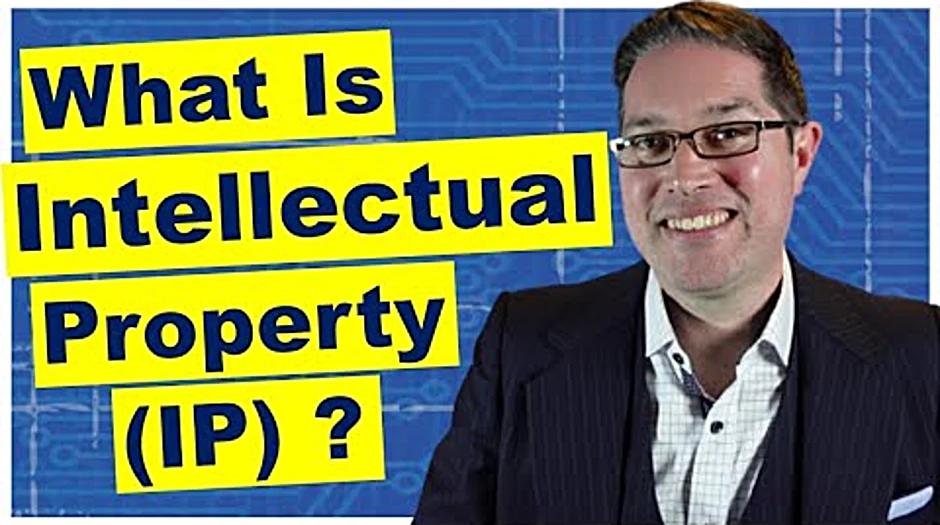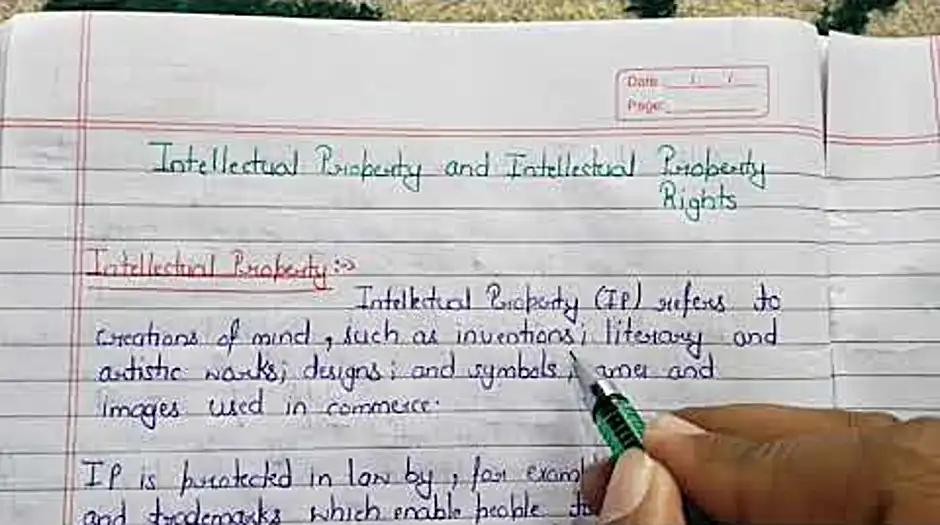Intellectual property definition for computer [With Pictures]
Table of Contents
- What is a simple definition of intellectual property?
- What are the 7 intellectual property rights?
- What is the difference between intellectual property and copyright?
- What is a common type of intellectual property?
- Why intellectual property is important in information technology?
- Why are intellectual property rights important?
- What are the 3 main types of intellectual property?
- What are the two types of intellectual property?
- How can we protect intellectual property?
- What are the 3 ways of protecting intellectual property?
- What is patent in computer class 10?
- What is intellectual property and example?
- What is intellectual property essay?
- What is intellectual property in computer class 11?
- What are the 4 types of intellectual property?
- What is intellectual property used for?
- What are the 5 types of intellectual property?
- What is intellectual property and how is it protected?
- What is intellectual property rights in computer class 10?
- What is intellectual property rights PDF?
Last updated : Aug 11, 2022
Written by : Amelia Haver |
Current |
Write a comment |
What is a simple definition of intellectual property?
Overview. In general terms, intellectual property is any product of the human intellect that the law protects from unauthorized use by others. The ownership of intellectual property inherently creates a limited monopoly in the protected property.
What is intellectual property and example?
Examples of intellectual property include an author's copyright on a book or article, a distinctive logo design representing a soft drink company and its products, unique design elements of a web site, or a patent on a particular process to, for example, manufacture chewing gum.
What is intellectual property in computer class 11?
Intellectual Property rights mean providing property rights through patents, copyrights and trademarks. Holders of intellectual property rights have a monopoly on the usage of property or items for a specified time period.
What are the 4 types of intellectual property?
Patents, trademarks, copyrights, and trade secrets are valuable assets of the company and understanding how they work and how they are created is critical to knowing how to protect them.
What is intellectual property used for?
Intellectual property rights are legal rights that provide creators protection for original works, inventions, or the appearance of products, artistic works, scientific developments, and so on. Basically speaking, intellectual property rights are a common type of legal IP protection for those who invent.
What are the 5 types of intellectual property?
In this post, we will explain the basics of the most common types of intellectual property — copyrights, moral rights, trademarks, patents, and trade secrets.
What is intellectual property and how is it protected?
Intellectual property is owned and legally protected by a person or company from outside use or implementation without consent. Intellectual property can consist of many types of assets, including trademarks, patents, and copyrights.
What is intellectual property rights in computer class 10?
Intellectual property rights are the rights given to persons over the creations of their minds. They usually give the creator an exclusive right over the use of his/her creation for a certain period of time.
What is intellectual property rights PDF?
ï‚· Intellectual property rights (IPR) can be defined as the rights given to people over the. creation of their minds. They usually give the creator an exclusive right over the use of. his/her creations for a certain period of time. TYPES OF IPR[10,11,12,13,14,15,16,17,18,19,20]
What are the 7 intellectual property rights?
Rights. Intellectual property rights include patents, copyright, industrial design rights, trademarks, plant variety rights, trade dress, geographical indications, and in some jurisdictions trade secrets.
What is the difference between intellectual property and copyright?
The terms “copyright†and “intellectual property†are often used interchangeably. However, copyright is just a part of the scope of intellectual property, as are trade marks, patents, and designs. Intellectual property (IP) describes a form of property which is the intangible output of the human creative mind.
What is a common type of intellectual property?
The three most common types of intellectual property are patents, trademarks and copyrights, and they each provide different and varying levels of protection.
Why intellectual property is important in information technology?
Protecting intellectual property often promotes technological advancements because innovators are more likely to share their creations and products, knowing they'll maintain rights to their inventions. This benefits society as a whole, since more innovations lead to increased advancement.
Why are intellectual property rights important?
Strong and Enforced Intellectual Property Rights Protect Consumers and Families. Strong IP rights help consumers make an educated choice about the safety, reliability, and effectiveness of their purchases. Enforced IP rights ensure products are authentic, and of the high-quality that consumers recognize and expect.
What are the 3 main types of intellectual property?
Types of intellectual property rights patents. trade marks. copyright. designs.
What are the two types of intellectual property?
Intellectual property has two categories: industrial property and copyright and neighboring rights.
How can we protect intellectual property?
- Apply For Trademarks, Patents, and Copyrights.
- Never Stop Innovating.
- Arrange Some Evidence While Innovating.
- Separate Teams.
- Get the Intellectual Property Infringers Punished.
- Avoid Joint Ownership For Intellectual Property Rights.
What are the 3 ways of protecting intellectual property?
There are only three ways to protect intellectual property in the United States: through the use patents, trademarks or copyrights. A patent applies to a specific product design; a trademark to a name, phrase or symbol; and a copyright to a written document.
What is patent in computer class 10?
A patent is an exclusive right or rights granted by a government to an inventor for a limited time period in exchange for the public disclosure of an invention. Examples of classes of patents include business method patents, software patents, biological patents and chemical patents.
What is intellectual property essay?
Intellectual Property Rights Essay Means that the works must independently develop by the authors, the creativity must be involved in the creation. Article 5(2) of the Berne Convention explicitly states that the enjoyment and the exercise of copyright shall not be subject to any formality.

Check these related keywords for more interesting articles :
Intellectual property rights deutsch
Can you patent a drawing
How to download copyright free videos
How to patent software
How do i trademark my logo and name
Trademark registration process documents required
How to start own garment brand
How to protect your patent idea
How to get trademark in the philippines
How to patent your idea free
How to check patent status of medicine
Trademark and copyright filing
Trademark registration in india official website
How to copyright my logo
Trademarks and service mark protection is exclusively federal
Did you find this article relevant to what you were looking for?
Write a comment
Comment by Dominga Sardella
Thanks for this great article
Thanks for your comment Dominga Sardella, have a nice day.
- Amelia Haver, Staff Member
Comment by tuntainlyd
what is the definition of ip or how would you define ip this video is going to give you the answers to all of that and even tell you about the four types of ip if you're new here my name is dylan adams i am a patent attorney and author of the best-selling book patent's demystified which is an insider's guide to protecting ideas inventions used by inventors entrepreneurs and startups worldwide including at top universities like harvard stanford at mit you might as well recognize me from my appearance on cnbc's hit show the profit with marcus lemonis so ip how would you define ip what is the definition of ip so let's let's sort of uh differentiate intellectual property versus real property so real property is physical things like real estate whereas iep or intellectual property relates to inventions of the mind things that are created now there are four types of ip or intellectual property there are trademarks there are copyrights there are patents and there are trade secrets so let's uh let's start with trade secrets so trade secrets relate to things that are kept secret um and they can really apply to all sorts of intellectual property especially at the beginning and we'll kind of get into that later on so trade secrets are things that are not readily known to the public things that you can't things that you know you can't search and find things that are actually secrets and things that have value that's sort of the general definition of trade secrets and you have to take reasonable steps to keep things secret so you can't say well this is a trade secret but then you know do it publicly you know in a factory in a window like if you have a a process that you want to keep as a trade secret you can't you know have people walking by and be able to have them see what that is so it has to be something you actually take reasonable steps to keep secret so let's then talk about trademarks so trademarks relate to goods and services and marks related to goods and services so trademarks can be things like a name of a business a name of a of a company slogans it can be logos and even things like colors or smells could potentially be trademarks but that's kind of complicated in some ways but the thing to understand about trademarks is they're intimately associated with goods and services so where other sorts of intellectual property just to relate to things generally a trademark is going to be very associated with a specific type of good and service so it really depends on what it is you're doing with the business with the products you're selling or the services you're providing that really is going to be important when it comes to whether your trademark is protectable a good example of that is apple so the first thing you're probably going to think of when you think of apple is you're going to think of computer electronics right you know it's a company that does software that makes computers but you know if you were to say have a company that was that was doing um you know producing applesauce or producing apple trees you know or you know selling apples so that company couldn't trademark that name because that would be generic to that type of type of business but it's important to note that multiple companies could have the name apple so there's um there's apple recording studios which is actually the recordings here that the beatles uh were were associated with so you know there can be multiple people who have the same trademark but if they have different goods and services such that you know your average person wouldn't confuse the different companies then maybe you know you can have the same mark the same trademark for different businesses even though there's you know even you know though they're the same mark as long as they're used for different goods and services then people can have the same trademark so uh so i am a patent attorney my focus is on patents and patents relates relate to useful articles so patents can relate to systems or things physical physical products or it can be methods methods of manufacturing something it could be a method that is performed by say a computer or some software as it's as it's performing its functions or it can be things like you know methods of using things those are all protectable methods so patents can be differentiated from copyrights as far as a type of intellectual property or ip as so patents relate to useful things or utilitarian things copyrights relate to artistic works so a good example of copyrights would be things like paintings a movie script works of works of music things like that so they're definitely diametrically opposed copyrights and patents again patents cover utilitarian articles copyrights cover artistic works but that's not to say that things can't be covered by multiple types of intellectual property or ip so in the beginning when people are developing technology it's probably going to be covered by trade secret and then at some point when they patent at some point the patent if it issues or even when it's pending a lot of times it'll publish and it'll become public so the things that are in that those things aren't going to be able to be trade secrets because they're publicly known but they can be covered by patent but there may be some aspects that are trade secrets so if there's some some processes that are software processes say with uh you know with with computers if it's not known and you know you don't know what's going on in the back end those could remain trade secrets whereas some functionalities could be patented so you could have trade secret on things and you could have patents on things similar with copyright and patents so let's say you have a chair so because a chair is a utilitarian article even though chairs are very artistic in a lot of ways you know they they are still utilitarian things and so you would have to protect those with with a patent and probably a design patent but that doesn't mean that copyright isn't potentially applicable to that so if you were to have a fabric design that was unique that could be copyrightable or if there was a specific uh you know design or or carving on on something that was art on the chair that could be protected by copyright so multiple types of intellectual property can protect a a certain product um you know just because something you know is is particularly one thing doesn't mean it could be you know can't be protected by all sorts of other things like someone with trademark for instance you know if um you know if you have a you know a a like the chair for instance if the chair is protected by a design patent and then you have copyrights on the fabric design and maybe you know um you know some some carvings on it you could have a copy around that but if there are brand names on it or if there are things that uh that really show that it's part of your company like say gucci if they were to have gucci on the fabric that could be protected by trademark as well um so you know there those are some you know those are some things where you know there are multiple types of ip and then for as far as trade secret goes if it's
Thanks tuntainlyd your participation is very much appreciated
- Amelia Haver
About the author

Amelia Haver
I've studied linear algebra (vector space) at University of Massachusetts Lowell in Lowell and I am an expert in behavioural genetics. I usually feel content. My previous job was newspaper editor I held this position for 30 years, I love talking about weightlifting and fantasy sports. Huge fan of Lou Barlow I practice fly-fishing and collect coca-cola.
Try Not to laugh !
Joke resides here...
Tags
What are the 7 intellectual property rights
What is the difference between intellectual property and copyright
What is a common type of intellectual property
Why intellectual property is important in information technology
Why are intellectual property rights important
What are the 3 main types of intellectual property
What are the two types of intellectual property
How can we protect intellectual property
What are the 3 ways of protecting intellectual property
What is patent in computer class 10
What is intellectual property and example
What is intellectual property essay
What is intellectual property in computer class 11
What are the 4 types of intellectual property
What is intellectual property used for
What are the 5 types of intellectual property
What is intellectual property and how is it protected
What is intellectual property rights in computer class 10
What is intellectual property rights PDF
 : 2568
: 2568

